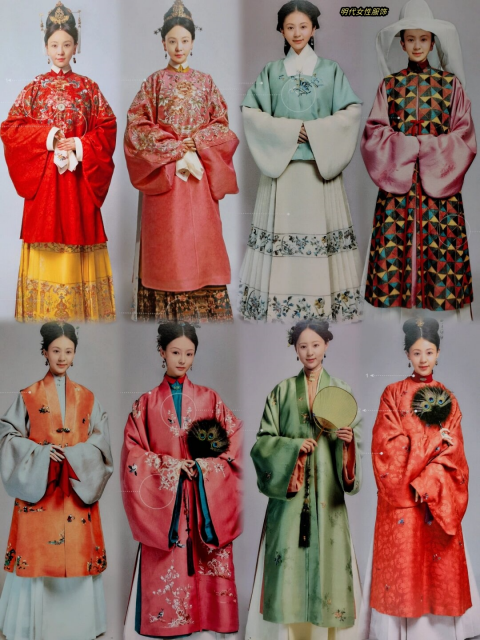Ming dynasty costumes, as the culmination of China’s Hanfu system, exude the wonderful vitality of traditional Chinese costumes. Traditional Ming dynasty clothing not only condense historical value but also are the most direct reflection of social hierarchy, etiquette and aesthetics in the Ming dynasty. After the founding of the Ming dynasty, Zhu Yuanzhang implemented a costume policy of “restoring the Han system”. Based on the costume systems of the Tang and Song dynasties, the Ming costume system integrated diverse elements, forming rigorous and gorgeous costumes with unique Ming-style features, which became an important representative of traditional Chinese costumes.
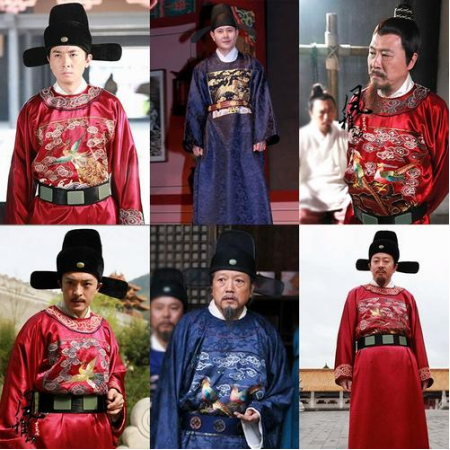
Men’s Ming Dynasty clothing
Men’s clothing in the Ming dynasty were dominated by robes, with various styles and clear functions. Ordinary civilians usually wore “Zhishen” (a straight-cut robe) or “Dahu” (a short jacket worn over inner garments). These were mostly made of cotton and linen in simple colors.
Scholars and officials usually wore “Daopao” (a robe with crossed collars, right overlap and long wide sleeves) or “Tieli” (a long robe with pleats front and back). They tied a sash around the waist and wore the iconic “Sifang Pingding Jin” (a square-shaped hat symbolizing stability) on their heads.
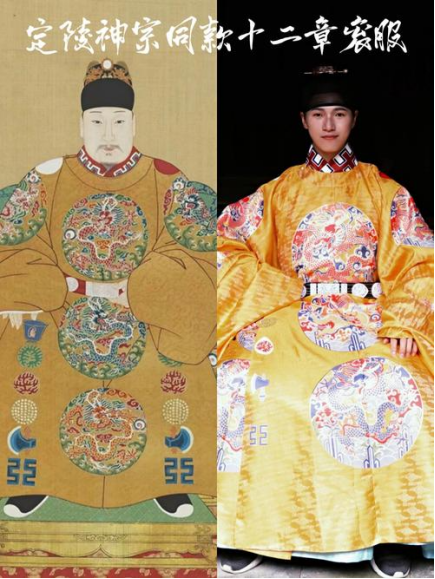
Ming Dynasty Royal clothing
Another distinctive costume of the Ming dynasty was the “Mangpao” (python-patterned robe). Originally, it was a robe bestowed by the royal family, but later high-ranking officials could also wear it.
Royal clothing of the Ming dynasty were unparalleled in terms of overall ritual
system and luxury. The emperor’s clothing were divided into types like ritual costumes and daily costumes. Among them, the “Gunfu” (emperor’s ceremonial robe) was the most grand and often worn in sacrificial ceremonies.
There was also the common “dragon robe” and the “Dashan Xiapi” (a large jacket with Xiapi, a decorative sash) for imperial concubines. All these costumes reflected the royal family’s supreme status in terms of ritual system, patterns, colors and materials.
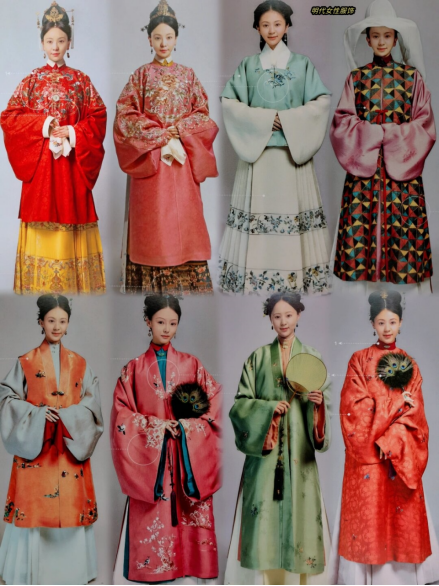
Women’s Ming Dynasty clothing
Women’s clothing in the Ming dynasty were known for elegance and grace. The most representative one was the “Aoqun” (jacket and skirt set).
Aoqun consists of a short jacket (with crossed collars or standing collars) on the upper body and a pleated “Mamian Qun” (horse-face skirt) on the lower body. Jackets had various sleeve styles, from basic narrow sleeves to pipa sleeves (sleeves shaped like a pipa, a traditional Chinese lute).
The Mamian Qun had four skirt panels front and back. When walking, it swayed like a breeze, looking dignified and elegant. Noble women usually wore a “Bijia” (a sleeveless jacket) or “Pifeng” (a cape) over their costumes.
Besides the typical Aoqun set, there was another well-known and gorgeous costume for Ming women – the “Xiapi” (a decorative sash). Originally, Xiapi was a decorative sash for noble women in the imperial court. Later, it gradually became an important part of wedding dresses. Made of dark silk, Xiapi was usually embroidered with bird patterns. Now, many brides choose this costume in Chinese-style weddings.
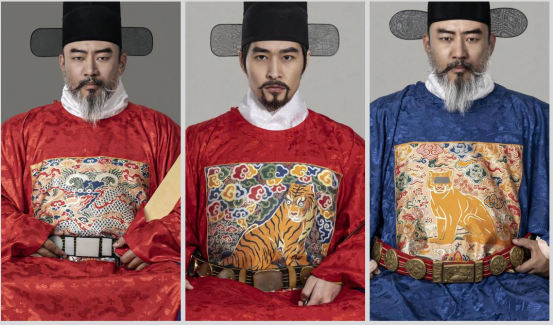
Ming Dynasty Officials clothing
The clothing of Ming officials strictly distinguished ranks through small details. The most representative one was the “Bufu” (official robe with embroidered patches).
Civil and military officials usually had “Buzi” (embroidered patches) on the front and back of their daily robes. Civil officials’ patches were embroidered with birds, while military officials’ with beasts. Different animals were used to tell ranks apart.
The costume colors for the nine ranks of Ming officials were also clearly regulated:Ranks 1 to 4: Crimson、Ranks 5 to 7: Cyan、Ranks 8 to 9: Green,This strictly divided official ranks.
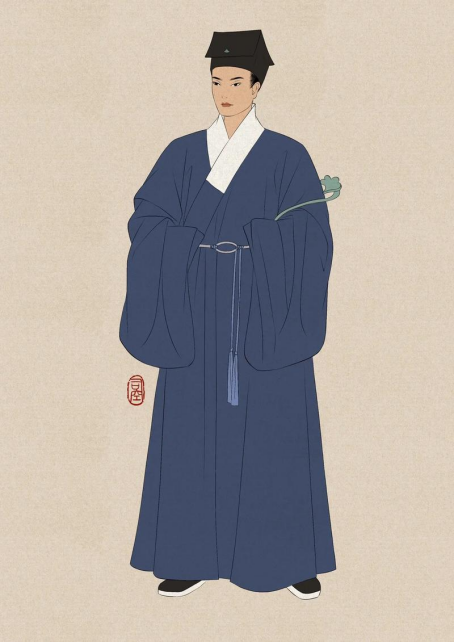
Ming Dynasty Common clothing
The overall style of common people’s clothing in the Ming dynasty was practical and simple, reflecting the social and economic conditions of that time. Farmers’clothing were mostly short clothes with narrow sleeves, mainly made of hemp and cotton. They were in dull colors, such as cyan, white and brown. Men usually wore “Duanda” (short jacket and trousers) – a style with a short upper garment and trousers. Women mostly wore cloth skirts and pleated trousers.The differences in Ming dynasty costumes reflected the inherent class differentiation in feudal society.
Next, we will introduce the materials, production techniques and other aspects of representative traditional Ming dynasty costumes in the form of a table:
| Costume | Materials and Costume Features | Suitable Occasions |
| Dragon Robe | Jiangsi (silk with complex weaving), Yunjin (cloud-patterned brocade), and Twelve Imperial Emblems | Emperor’s sacrificial ceremonies, court grand ceremonies |
| Mamian Qun (Horse-face Skirt) | Silk, brocade cloth; fine pleats, embroidered skirt panels | Women’s daily life, festival rituals |
| Daopao (Scholar’s Robe) | Hemp, silk; crossed collars, wide sleeves, loose-fitting body | Scholars’ gatherings, scholars’ daily life |
| Bufu (Official Robe with Patches) | Plain yarn, Luo (a lightweight silk fabric); patches with colorful embroidery or jiangsi (silk with complex weaving) patterns of birds and beasts | Officials’ work, formal occasions |
| Bijia (Sleeveless Jacket) | Brocade, silk with hidden patterns; sleeveless, front-opening, trimmed edges | Women’s outer wear in autumn and winter, noble women’s daily wear |
| Duanda (Short Jacket & Trousers) | Coarse hemp, cotton cloth; short upper garment with trousers, narrow sleeves, simple design | Farmers’ work, common people’s daily life |
| Phoenix Crown | Adorned with gold inlays, pearls, precious stones; woven with metal wires | Imperial concubines’ ceremonial occasions, noble women’s wedding dresses |
| Wusha Mao (Black Gauze Hat) | Covered with black gauze, framed with bamboo strips; two extended corners | Daily wear for officials, symbolizing official status |
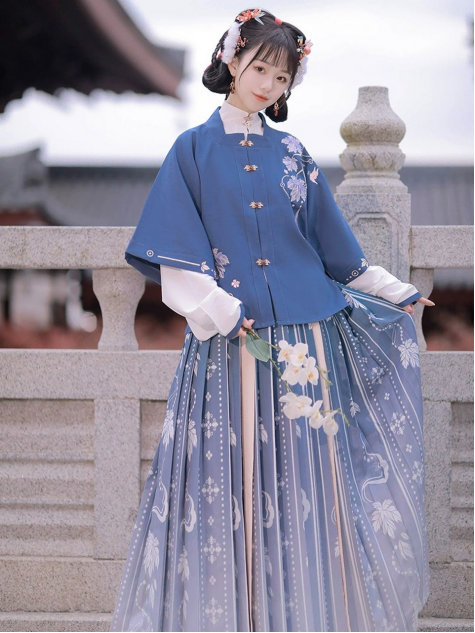
Questions about Ming Dynasty Clothing
What was the costume hierarchy system of the Ming dynasty?
The costume hierarchy in the Ming dynasty was strict. Identity was distinguished by costume color, patterns and accessories. For example: Nobles could use brocade and silk, while common people were limited to plain-colored cloth and forbidden to wear “noble colors” (such as yellow and purple). Merchants had more restrictions and could not use silk.
Which dynasty’s costumes are most popular in the market?
Many insiders say: “Ming dynasty costumes are the culmination of the entire Hanfu system. They inherit the core styles of Tang and Song Hanfu in depth-such as crossed collars with right overlap and wide robes with large sleeves. They form a complete system, from imperial robes of emperors and empresses, to officials’Bufu, and to common people’s cloth shirts. Moreover, they have exquisite craftsmanship, supported by techniques like gold weaving and Kesi (silk tapestry), and rich patterns. Many later Hanfu designs can find traces in Ming dynasty Hanfu.

